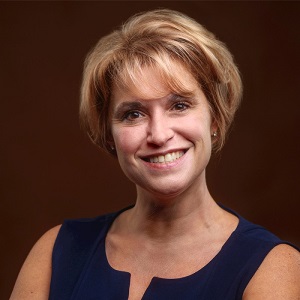Written by Amy Turnquist, EVP Sales, eHealthcare Solutions, President, Philadelphia Chapter of the HBA

It also includes a vision of an ecosystem with more women in key leadership roles as well as in the boardrooms setting health policy and business strategy.
This year HLTH’s schedule included 9 programs designed to shine a light on the advancement of women in health – ranging from prescheduled board readiness interviews with attending CEOs through a partnership with Break into the Boardroom, to a full half day track dedicated to WOMENatHLTH. Attendees were encouraged to take the “parity pledge” (parity.org) by committing their organizations to interview at least one qualified woman for every open role.
And on the first day of the conference, the HLTH Foundation announced that they had acquired CSweetener, a not-for-profit organization which provides mentoring resources to female leaders on the path to – and already in – the healthcare C-Suite. (Read more about this here)
Through Pharma Marketing Network’s partnership with HLTH, I was invited to attend the Women of Impact Luncheon to gather specific insights into how men and women can work together to achieve parity in the healthcare workplace. The standing-room-only panel discussion was moderated by Ceci Connolly, President and CEO at Alliance of Community Health Plans (ACHP) and founder of Women of Impact (womenofimpact.net).
Joining her on the panel were:
- Ann Mond Johnson, CEO, American Telemedicine Association
- Vinny Arora, MD, Assistant Dean and Director GME Innovation, University of Chicago Pritzker School of Medicine
- Karen Remley, MD, MBA, Senior Fellow, de Beaumont Foundation
- Dr. Thomas Lee, CMO at Press Ganey
First, a few sobering statistics. Ceci reported that while women make up 80% of the healthcare workforce, they are represented by only 28% of board seats and 35% of C-suite positions. We are still a long way away from true parity in healthcare.
But there is hope – and proof that parity is good for business. A 2019 report by the Korn Ferry Institute reports that healthcare firms saw a 20% lift in stock price momentum in the first 2 years following the appointment of a female CEO. (See https://www.kornferry.com/institute/women-ceo-cfo-stock-performance) The business case is real.
But many women get stuck when making the transition from “expert” to “leader.”
How can more women advance? The panel shared these tips:
Seek Sponsors as well as Mentors
Don’t know the difference? Think of it this way: mentors advise you; sponsors advocate for you. To get ahead, women need both and they need men as part of their mentoring team. Surprisingly, woman-to-woman mentoring relationships are generally less valuable than male-female or female-male arrangements.
The panelists encouraged attendees to build their own “Personal Board of Directors”. Find other executives whose interests align with yours, but don’t just look within your own vertical or area of expertise. Expand your perspective and be intentional about finding others who can fill gaps in your experience. For example, if you want to be a CEO, list the top 10 skills or experiences you need to acquire first. Then find people who can help you start checking off that list.
Karen Remley provided another interesting perspective – don’t overlook “anti-mentors”, people who demonstrate behaviors that you don’t want to copy. Analyze what it is about their behavior that you don’t like and ask yourself “what can I learn from this experience?”
Relentlessly Build Your Brand
Dr. Thomas Lee shared his specific insights around the importance of strategically building your personal brand. His advice: Your brand should be based on a problem that you are passionate about solving.
- Know what you want your brand to be about.
- Know what memory you are trying to create. Memory trumps experience. What do you want to be remembered for?
- Seek out opportunities to align your activities with those goals. Writing is one key way to communicate your desired brand message. Take advantage of social channels to create your reputation and your network.
Uncover & (respectfully) Challenge Implicit Bias
We all have seen examples of this. An executive assuming that Jane Doe isn’t a candidate for promotion because she has children and isn’t willing to relocate, for example. Women can play an important role in advocating for other women in this case by calling out these assumptions and encouraging leaders not to make decisions for other employees without giving them the option to answer for themselves. The panel shared that in their experience, most men aren’t intentionally propagating bias. They generally aren’t even aware of it until it is brought to their attention.
Outside of our roles as executives, each of us has the individual opportunity and the obligation to step up and question situations that just don’t seem right. Ceci shared a story about her experience as a reporter at the Washington Post, where it was generally accepted that there was only one seat available on staff for a woman. Every woman competed viciously for that one spot; no one thought at the time to stop and ask or challenge “why” there was only room for one woman. Today we are moving away from competition toward true collaboration to support each other and move the business of healthcare forward.



![6 Digital Tools at the Center of Healthcare Digitalization [INFOGRAPHIC]](http://ec2-54-175-84-28.compute-1.amazonaws.com/pharma-mkting.com/wp-content/uploads/2021/04/6DigitalTools_600px-218x150.jpg)




![6 Digital Tools at the Center of Healthcare Digitalization [INFOGRAPHIC]](http://ec2-54-175-84-28.compute-1.amazonaws.com/pharma-mkting.com/wp-content/uploads/2021/04/6DigitalTools_600px-100x70.jpg)




